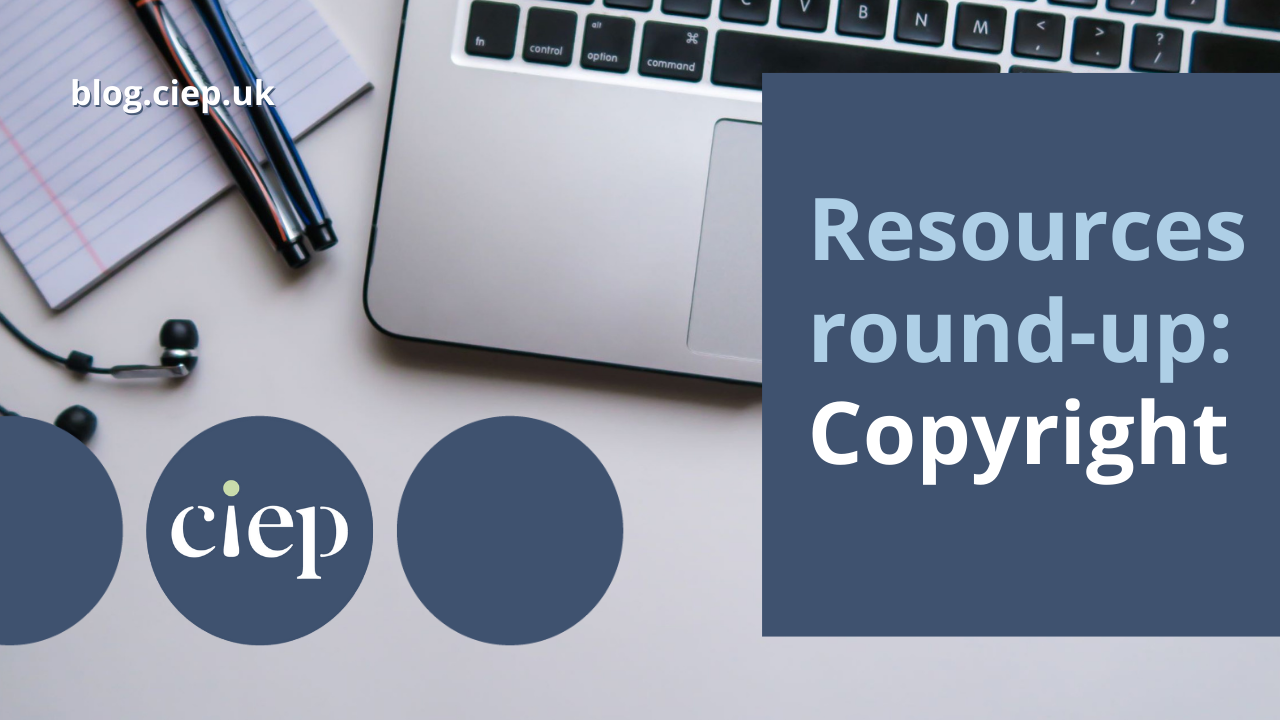Welcome to this round-up of resources from the CIEP. This time, our subject is copyright.
How much you need to know about copyright as a publishing professional will vary according to the role you have within the publishing process. The resources in this round-up should get you started in understanding the basics, and at the end we’ll point you towards three courses that will teach you the principles of copyright in more detail.
An overview of copyright
Before launching into the details of copyright, it’s worth taking some time to understand what it is and does. The CIEP’s new fact sheet ‘Copyright’, by Pippa Smart, is a great start here. It covers what copyright is and who owns it, how copyright works can be used, moral rights, and instances where you don’t need permission, plus details like copyright layers and the Berne three-step test, all from a UK perspective. Soon this fact sheet will be available to members only, but it’s currently available for a limited time to non-members too.
Detailed guidance
Once you’re ready to look at copyright in more detail you can find information on the Copyright Licensing Agency (CLA) website, with links to the UK government’s Intellectual Property Office and other official guidance. The UK government is a good source of detailed information on copyright, including a list of exceptions to copyright.
Check out these fact sheets from the UK Copyright Service, too: UK copyright law, using the work of others, understanding fair use and obtaining permission to use copyright material.
Resources by publishers and authors
It can be especially useful to look at copyright from the point of view of publishers and authors. The Publishers Association has produced guidance, as has the Society of Authors. As far as self-publishing goes, Pippa Smart recommends this blog post from the ALLi website about one independent author’s use of song lyrics. Resources by US-based Helen Sedwick on lyrics and images are also useful for self-published authors.
Copyright by the book
A book that many editors will already own is Butcher’s Copy-editing, and Section 3.7 is devoted to copyright permissions and acknowledgements. There are also chapters about copyright within other books about the wider publishing process:
- Inside Book Publishing by Giles Clark and Angus Phillips (Routledge, 2019) – Chapter 12 is on rights sales.
- The Professionals’ Guide to Publishing by Gill Davies and Richard Balkwill (Kogan Page, 2011) – Chapter 8 is about understanding how rights and permissions work.
If you want to delve deeper, try:
- Copyright Law for Writers, Editors and Publishers by Gillian Davies in association with Ian Bloom (A & C Black, 2011), reviewed on the CIEP website.
- Publishing Law by Hugh Jones and Christopher Benson (Routledge, 2016).
Courses on copyright
If you’d like more confidence in understanding and working with copyright, a training course may be a good option. The CIEP offers Copyright for Editorial Professionals, an online self-study course of around 30 hours, and the PTC offers Copyright – the basics, an online, half-day course, and Essential copyright for publishers, an e-learning module.
 About the CIEP
About the CIEP
The Chartered Institute of Editing and Proofreading (CIEP) is a non-profit body promoting excellence in English language editing. We set and demonstrate editorial standards, and we are a community, training hub and support network for editorial professionals – the people who work to make text accurate, clear and fit for purpose.
Find out more about:
Photo credits: Laptop and notebook by Maya Maceka, bookshop sign by César Viteri, both on Unsplash.
Posted by Harriet Power, CIEP information commissioning editor.
The views expressed here do not necessarily reflect those of the CIEP.




